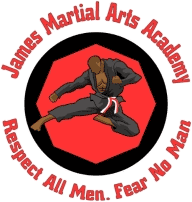What is the goal of Kajukenbo?
Table of Contents

Kajukenbo is a martial art that originated in Hawaii. It consists of several martial arts combining techniques to be more effective in combat. Kajukenbo is a martial arts style that focuses on practicality and effectiveness.
What Is The History Of Kajukenbo?
Developed on Hawaii’s islands of Oahu and Maui in the 1940s, Kajukenbo is a hybrid martial art. A self-defense system combines techniques from various martial arts backgrounds, including Karate, Judo, jiujitsu, Kenpo, and boxing. Kajukenbo is known for its practicality and effectiveness in street fighting and has been taught to military and law enforcement personnel worldwide.
The word “Kajukenbo” is a combination of the Japanese words “Kai,” meaning “open,” “Ju,” meaning “hand,” “Ken,” meaning “fist,” and “Bo,” meaning “boxing.” The art came into being by a group of five black belts who pooled their knowledge of different martial arts to create a system that would be more effective than any single style alone. Karate, Judo, Jujitsu, Kenpo, and boxing combine in Kajukenbo to create a unique martial art form.
Based on its effectiveness and logical approach, it’s one of the most popular forms of self-defense. It was founded in 1947 by Sijo Adriano Emperado in Hawaii. Its main philosophy is that every martial arts style has something to offer. Martial artists can become more well-rounded by accepting and training according to that philosophy. Kenpo emerged as the core around which they built this brutal new art.
Adriano Directo Emperado also studied with Kali and Arnis Escrima but was not named as influential. Other activities influenced by Emperado were American Boxing (Choo was the Hawaiian Welterweight Champion) and Escrima (Ricardo Emperado also studied American Boxing). As an art form, Kajukenbo was characterized by adaptability and eclecticism. Since its inception, Kajukenbo has undergone continuous change and evolution.
Kenpo (also known as “Traditional Hard Style” or “Emperado Method”), Tum Pai, Chu’an Fa, Wun Hop Kuen Do, and Gaylord Method are five of the “recognized” branches of Kajukenbo. Furthermore, many “non-recognized” branches, such as CHA-3 and Kenkabo. Outsiders may find this confusing, but it is the essence of art. Students don’t need to imitate instructors but are encouraged to express themselves as individuals.
A Japanese martial arts organization called Kajukenbo was founded in Hawaii in 1947 at the Palama Settlement, a violent area. In the beginning, a group called the “Black Belt Society” brought together black belts from different martial arts backgrounds to train and learn. It began an evolutionary, adaptive style combining the aspects of the most valuable art.
Kaju's Self-Defense Roots
Fistfights and stabbings were common in Palama Settlement during the late 1940s. Kajukenbo wanted to create valuable art from the streets. Due to their extensive training and fighting, the founders of Kajukenbo quickly gained a reputation as formidable street fighters. Adriano Emperado and his brother, Joe Emperado, began teaching the new art in an open class in 1950. The school was known as the Kajukenbo Self-Defense Institute (KSDI).
Move to the Mainland
Students were routinely knocked unconscious during training, broke bones, and fainted due to exhaustion and realism.
Nevertheless, the reputation of this challenging art attracted more students, so Emperado opened a second school at the nearby Kaimuki YMCA. As of the
As of this interview, there are 12 Kajukenbo schools in Hawaii, making them the second-largest string of schools.
John Leoning, a black belt from Emperado, brought Kajukenbo to the mainland in 1958. Since then, Kajukenbo has continued to develop and grow.
Mind, body, and spirit as one
Kenpo emerged as the core around which we built this new art. The Kenpo-Karate system combines two highly effective self-defense techniques. Kenpo means “law of the fist.” Karate means “empty hands.” Both develop connections between the body, mind, spirit, and emotions.
Although obscure, Kenpo originated with Daruma, who migrated to China around 525 AD as the 28th Buddha. Due to the geographical location of India, China, Korea, and Japan, there was an exchange of ideas and principles.
According to Sijo Emperado, American street fighting differs from Asian street fighting, and many older techniques have changed. Between 1947 and 1949, Kajukenbo emerged due to his successful combination of modern Kenpo (Hard Style) methods with other martial arts.
In keeping with Kajukenbo’s motto, “Train hard, remain strong,” Kajukenbo Arizona extends this with the school motto: “Live Clean, Fight Dirty.”
How Many Levels Are There In The CQB System Of Kajukenbo?
The CQB system of Kajukenbo is a fighting system that combines elements from various martial arts, including Karate, jiujutsu, Judo, and boxing. It has four levels of proficiency: white, yellow, orange, and red. The colors appear in the karate grading system.
The basic principles of Kajukenbo rely on the traditional martial arts of Brazilian Jiu-Jitsu. A highly effective self-defense system emphasizes disarming and knocking an opponent to the ground or off-balance with strikes, throws, and joint locks. The result is a very high rate of submission victories over other martial arts styles.
First, there is a white belt level with only lessons in front stance and reverse punch to break the system down. White belts cannot hold or use weapons or strikes for self-defense. As students progress through proficiency levels, they can add kicks, punches, blocks,
and throws to their repertoire.
Level Yellow adds side stance and weapon defenses, but still no strikes or throws. Level Orange adds a side stance, punches, blocks, and throws to the curriculum. Finally, Level Red adds all the techniques in each level to create the most advanced self-defense system of Kajukenbo.
Conclusion
The dynamic nature of these martial arts classes allows them to adapt to any situation due to their versatility—an excellent way to protect yourself from any attack, whether armed or unarmed.
Women and men can do it, regardless of age or fitness level. It is easy to learn because training sessions do not require time and effort. The techniques are simple, making them easy to remember and execute during an emergency. It is an excellent choice for anyone who wants to learn self-defense.
Frequently Asked Questions
Developed on Hawaii's islands of Oahu and Maui in the 1940s, kajukenbo is a hybrid martial art. A self-defense system combines techniques from various martial arts backgrounds, including Karate, Judo, jiujitsu, Kenpo, and Boxing. Kajukenbo is known for its practicality and effectiveness in street fighting and has been taught to military and law enforcement personnel worldwide. The word kajukenbo is a combination of the Japanese words Kai, meaning open, Ju, meaning hand, Ken, meaning fist, and Bo, meaning boxing.
